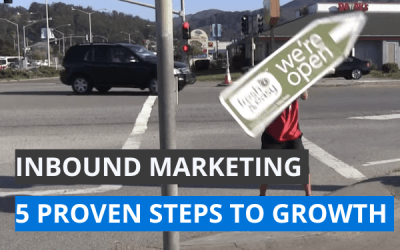Having a website marketing strategy is so vital to your overall marketing strategy. In this blog, I’ll look at how to develop a strategy that maximises your website’s potential.
Table of Contents
The Role Of Your Website
Your website can fulfil many purposes within your marketing funnel.
It’s your shop window for your business, your products and services catalogue, a Q&A forum, and a salesman who never sleeps or quits. It’s your brand ambassador, a lead generator and a point of contact. However, its main goal should always be to turn visitors into leads.
But how do you ensure that your website is fulfilling these objectives?
A good place to start is to benchmark your existing website against known standards and identify any gaps that may exist.
If you’re wondering where you might find such a benchmark list, you’re in luck- you’re about to read one.

Website Benchmarking
Your website needs to capture your visitors’ attention, let them know they’ve found the solution to their problems, and help them to trust that you can deliver effective results. For this to happen, you need to assess, or audit, against these categories:
- Initial impressions
- Video and image content
- Page navigation
- Site personality
- Call to action
- Body copy
- Trustworthiness
- Footer content
- Visitor tracking
- Automations
Let’s unpack these now- understanding them is key to developing your website marketing strategy. In the interest of brevity, however, I’ll focus on the first five topics.
Don’t worry, though; there’s a link to access the full list at the end.
Initial Impressions
When it comes to first impressions, you have mere seconds to grab your website visitors attention, before they hit the back button and head back to the search engine results.
In order to keep your visitors on page therefore, you need to answer the big 4 questions- who your products or services are for, what you do, why your visitors should care, and what they need to do next.
You can achieve this through a clear and concise headline and subheading.
Getting this right is fundamental to creating your website marketing strategy.
Video and Image Content
Pictures and video are a great way to capture attention and communicate information quickly, yet with immense detail. So, it’s great to make sure you have engaging video and imagery which again answers the big 4 questions.
Don’t be lulled into using the stock photography offered by most website builders- use as much of your own imagery as possible. It adds a human touch and reinforces your credibility and trustworthiness as it shows how real you are.
Your visual content is also a great way to inject personality into your website, through humour or relatability- helping to build trust (see point 4 below).
Page Navigation
Your web visitors need to be able to find the information they’re looking for as easily as possible.
This means having clear navigation through the pages and menus, however while remaining concise and uncluttered. It also means having your primary call to action (CTA) prominently displayed on the page- and don’t forget, a contact number also prominently available. What’s the point in converting the sale, then failing to facilitate contact?
It’s also a good shout to ensure your company logo is prominently on show.
Site Personality
Your website marketing strategy should, without a doubt, ensure that you build trust and familiarity between your potential customers and you.
So, having pictures of yourself, (the business owner), or employees is again, crucial. A video will further help to capture the true personality of the business and let your customers know who they’re dealing with.
Don’t be afraid to show some humility or use some humour. You can also dabble with creating video-guides, FAQs or general behind-the-scenes footage that will help to demonstrate your expertise and show you know what you’re doing.
Remember- “people buy people”.
Call To Action
Your call to action is what makes people…take action. It takes them from a reader, someone who is merely carrying out their research or testing the water…into a warmed up potential lead who is taking the crucial first step to becoming a paid customer.
So, your CTA needs to be displayed throughout your website. It’s OK to have a secondary CTA (your website marketing strategy will help define these), however they both need to be consistent.
It’s tempting to resist placing your CTA throughout your website, in order to refrain from appearing pushy or salesy. That, however, is a great way to lose sales. Therefore, aim to remind people of what they need to do (with your CTA) at least 3 times per page. Your copy should ensure that your CTA is concise and compelling.





0 Comments